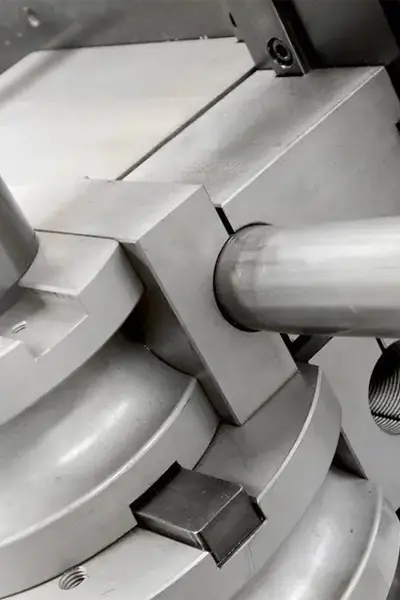Welcome to the fascinating world of tube bending machines – a realm where precision, technology, and innovation converge to shape the future of manufacturing. From automotive to aerospace, construction to custom fabrication, the significance of these machines in various industries is undeniable. In this comprehensive guide, we delve deep into what tube bending machines are, explore the various types, their applications, and the latest advancements in the field. Whether you’re a seasoned professional or new to the industry, this article provides invaluable insights into the capabilities and potential of tube bending machines.
- What is Tube Bending Machines
- Types of Tube Bending Machines
- Key Components and Their Functions
- The Bending Process
- Materials and Tube Bending
- Applications of Tube Bending Machines
- Maintenance and Troubleshooting
- Choosing the Right Tube Bending Machine
- How to Choose a Right Tube Bender Manufacturer
What is Tube Bending Machines
Have you ever wondered how intricate metal shapes are created for various industries? The answer lies in the remarkable technology of tube bending machines. These machines, a cornerstone in manufacturing sectors, are designed to bend tubes and pipes with precision and efficiency. But what exactly are they, and how do they work? Let's dive in.
At its core, a tube bending machine is a piece of industrial equipment used to mold tubes or pipes into desired shapes. These machines can handle various materials, including steel, copper, aluminum, and more, making them essential in fields like automotive, aerospace, construction, and many others. The process involves applying force to a tube or pipe, bending it at specific angles, and creating complex shapes like coils, spirals, or even simple bends.
The functionality of these machines varies, with some designed for simple, manual operations and others utilizing sophisticated, computer-controlled systems for intricate designs. The choice of a machine often depends on the project's complexity, the precision required, and the volume of production. As a leading tube bender manufacturer, we understand the importance of choosing the right equipment for the right job. Our machines are crafted to meet diverse industrial needs, offering both versatility and reliability.
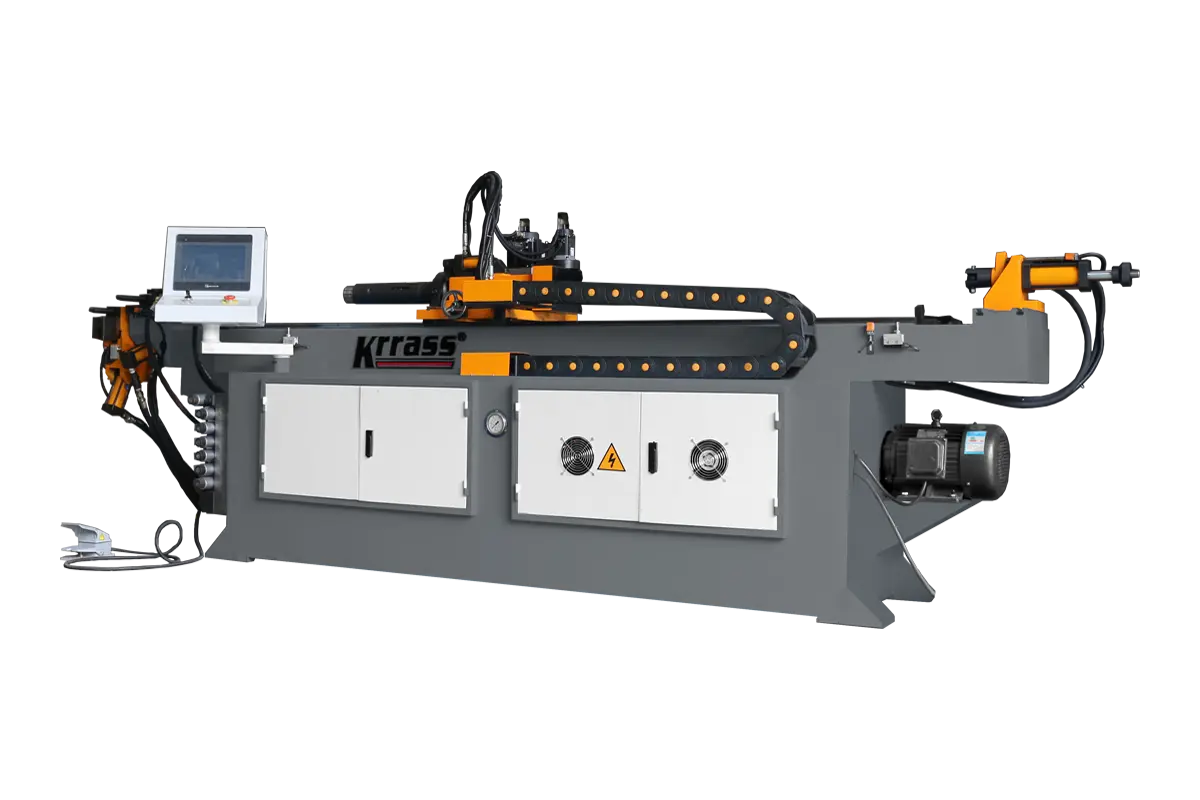
Types of Tube Bending Machines
Delving deeper into the world of tube bending, it's essential to understand the different types of tube bending machines available in the market. Each type serves a specific purpose and is tailored to various industrial requirements. From manual to high-tech solutions, let's explore these types.
Manual Tube Benders
Manual tube benders are the simplest form of benders. Ideal for small-scale operations or occasional bending tasks, these benders require physical effort to bend the tube. They are cost-effective, easy to use, and suitable for light materials and thin wall thicknesses. Perfect for custom or craft projects, they offer simplicity and affordability.
CNC Tube Benders
CNC (Computer Numerical Control) tube benders represent the pinnacle of precision and automation. Programmed to perform complex bending operations, these machines are ideal for high-volume production with consistent accuracy. They can handle multiple bending operations with minimal human intervention, making them a favorite in industries requiring intricate tube shapes and large-scale production.
Hydraulic Tube Benders
Hydraulic tube benders are powerful and can bend thicker and harder materials with ease. They use hydraulic pressure to bend tubes, offering more force than manual benders. These machines are common in industrial settings where heavy-duty bending is required. The precision and power make them a reliable choice for demanding tasks.
Pneumatic Tube Benders
Pneumatic tube benders utilize compressed air to bend tubes. These machines are known for their speed and are typically used for thinner and softer materials. They offer a good balance between manual and hydraulic benders, providing more power than manual benders without the high costs of hydraulic systems.
Electric Tube Benders
Electric tube benders are modern, efficient, and offer precise control. They use electric motors to power the bending process, resulting in smooth, consistent bends. These benders are often compact and quieter than hydraulic models, making them suitable for workshops where space and noise are concerns. They combine the benefits of automation and precision, catering to a wide range of bending needs.
Key Components and Their Functions
To fully appreciate how tube bending machines work, it's crucial to understand their key components and functions. Each part plays a specific role in the bending process, ensuring precision and efficiency. Let’s break down these components:
Bending Dies Explained
The heart of a tube bender is its bending die. This crucial component determines the radius of the bend. Made to fit the specific size and shape of the tube, the bending die ensures that the tube conforms accurately to the desired bend angle and radius. The quality of the bend, its consistency, and the absence of deformities like wrinkling or flattening, largely depend on the bending die's precision.
Pressure Dies and Their Role
Alongside the bending die, the pressure die plays a pivotal role. It applies direct pressure to the tube against the bending die, controlling the flow of the material during the bending process. This action prevents the tube from collapsing and ensures a smooth, wrinkle-free bend. The pressure die is essential for maintaining the tube's integrity and achieving a high-quality finish.
Mandrels and Wiper Dies
Mandrels and wiper dies are used to support the interior and exterior of the tube during bending, especially for tight radii or thin-walled tubes. The mandrel, inserted inside the tube, provides internal support to prevent collapsing. The wiper die, positioned at the bending point, prevents wrinkling on the inner radius of the bend. These components are critical for achieving clean, precise bends without compromising the tube's structural integrity.
Clamping and Pressure Systems
Clamping and pressure systems secure the tube in place during the bending process. The clamping system holds the tube against the bending die, while the pressure system applies force to push the tube around the die. This coordination is crucial for accurate and consistent bending. Advanced tube benders utilize hydraulic or pneumatic systems for this purpose, offering greater control and efficiency.
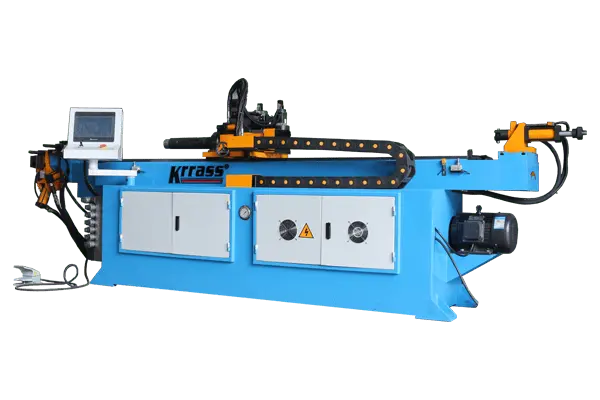
The Bending Process
Understanding the bending process is crucial for anyone interested in the functionality of tube bending machines. This process is a blend of precision, technology, and skill, ensuring the perfect bend every time. Let's walk through the main stages of the bending process.
Preparing the Tube
Preparation is the first step in the tube bending process. This involves making sure the tube is clean, free of any debris or corrosion, and cut to the correct length. The quality of the material and the accuracy of the cut play a significant role in the success of the bending process. Any imperfections can affect the final outcome, so attention to detail during preparation is key.
Setting Up the Machine
Next is setting up the tube bending machine. This involves selecting and installing the appropriate dies and mandrels, adjusting the settings for the specific bend requirements, and calibrating the machine. Precision in setting up ensures that the bending process will produce the desired results, meeting the specifications of the project accurately.
The Bending Operation
The bending operation is where the magic happens. The tube is placed in the machine, secured, and then bent to the desired angle and radius. During this stage, the machine's components work in unison to ensure a smooth bend. For CNC tube benders, this process is automated and precisely controlled by computer software, allowing for complex and repetitive bending tasks to be executed flawlessly.
Post-Bending Procedures
After bending, the tube often undergoes several post-bending procedures. These may include cleaning, inspection, and any necessary finishing touches like deburring. Quality control is vital at this stage to ensure that the bend meets all specifications and standards. The final product is then ready for use in its intended application, whether it be in construction, automotive, aerospace, or any other industry.
Materials and Tube Bending
In the realm of tube bending, the choice of material is as crucial as the bending process itself. Different materials behave uniquely under the stress of bending, and understanding these nuances is key to achieving perfect results. Let's delve into the materials commonly used in tube bending, their properties, and the challenges they present.
Common Materials Used in Tube Bending
The most frequently used materials in tube bending include metals like steel, stainless steel, aluminum, copper, and brass. Each of these metals has specific characteristics that make them suitable for different applications. For instance, steel is known for its strength and durability, making it ideal for industrial and construction uses. Aluminum, being lightweight and corrosion-resistant, is favored in automotive and aerospace industries.
Material Properties and Bending Considerations
When bending tubes, several material properties must be considered. These include the material's ductility, hardness, elasticity, and yield strength. Ductility determines how much a material can be bent without breaking. Hardness affects the force required for bending. Elasticity is crucial for understanding how much a material will spring back after bending, and yield strength relates to the maximum stress that can be applied without causing permanent deformation. Selecting the right bending technique and machine settings for each material is essential to accommodate these properties.
Specialty Materials and Challenges
In addition to common metals, specialty materials like titanium, Inconel, and various alloys are sometimes used in tube bending, particularly for high-performance or extreme applications. These materials often present unique challenges due to their higher strength, greater hardness, or specific reactions under stress. Bending such materials requires specialized knowledge, tools, and techniques to prevent cracking, wrinkling, or other defects.
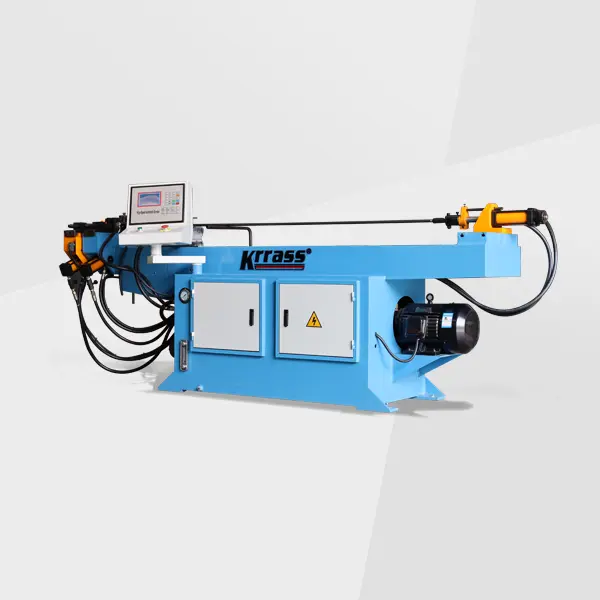
Applications of Tube Bending Machines
The versatility of tube bending machines is evident in their wide range of applications across various industries. From creating critical components for cars and planes to shaping the backbone of infrastructure and art, these machines play an integral role. Let's explore some of the key areas where tube bending machines make a significant impact.
Automotive Industry Uses
In the automotive industry, precision and reliability are paramount. Tube bending machines are extensively used to create exhaust systems, brake lines, fuel lines, and other crucial components. These machines allow for the creation of complex, custom shapes required in modern automotive design, contributing significantly to vehicle safety, efficiency, and performance.
Aerospace Applications
Aerospace applications demand the highest standards of precision and quality. Tube bending machines are used to manufacture airframes, engine components, hydraulic systems, and other aerospace parts. These components often require bending of high-strength, lightweight materials like titanium and Inconel, showcasing the advanced capabilities of modern tube benders.
Construction and Infrastructure
In construction and infrastructure, tube bending machines contribute to building frameworks, piping systems, and architectural elements. They enable the construction of complex geometries and durable structures, from bridges and buildings to public transportation systems. The ability to work with a variety of materials and sizes makes tube benders invaluable in these sectors.
Custom Fabrication and Art
Beyond industrial uses, tube bending machines also find their place in custom fabrication and art. They are used by artists and designers to bring creative visions to life, bending metal into intricate sculptures or functional art pieces. This application highlights the blend of technology and creativity, showcasing the machine's flexibility and precision.
Maintenance and Troubleshooting
Just like any sophisticated machinery, tube bending machines require regular maintenance to ensure optimal performance and longevity. Proper maintenance not only prevents downtime but also ensures the safety of the operators and the quality of the bends. Let's explore the key aspects of maintaining these machines and addressing common issues.
Regular Maintenance Practices
Regular maintenance of tube bending machines involves several routine checks and tasks. Lubrication of moving parts, inspection and cleaning of dies and mandrels, checking hydraulic and pneumatic systems for leaks, and ensuring electrical components are functioning correctly are all crucial. Additionally, keeping the machine clean from dust and debris helps maintain its precision and efficiency.
Common Issues and Solutions
Common issues encountered with tube bending machines include inaccuracies in bending, wear and tear of components, and hydraulic or pneumatic system failures. Solutions may involve recalibrating the machine, replacing worn-out dies or parts, and repairing or replacing faulty hydraulic or pneumatic components. Quick identification and resolution of these issues are crucial to minimize downtime and maintain production schedules.
Long-Term Care of Tube Bending Machines
For the long-term care of tube bending machines, it’s important to adhere to a comprehensive maintenance schedule. This includes regular check-ups, timely replacement of parts, and keeping a record of maintenance activities. Training operators and maintenance personnel on the proper use and care of the machine is also essential. Investing in regular maintenance ensures the machine’s longevity, reliability, and safety, ultimately contributing to better productivity and reduced costs over time.
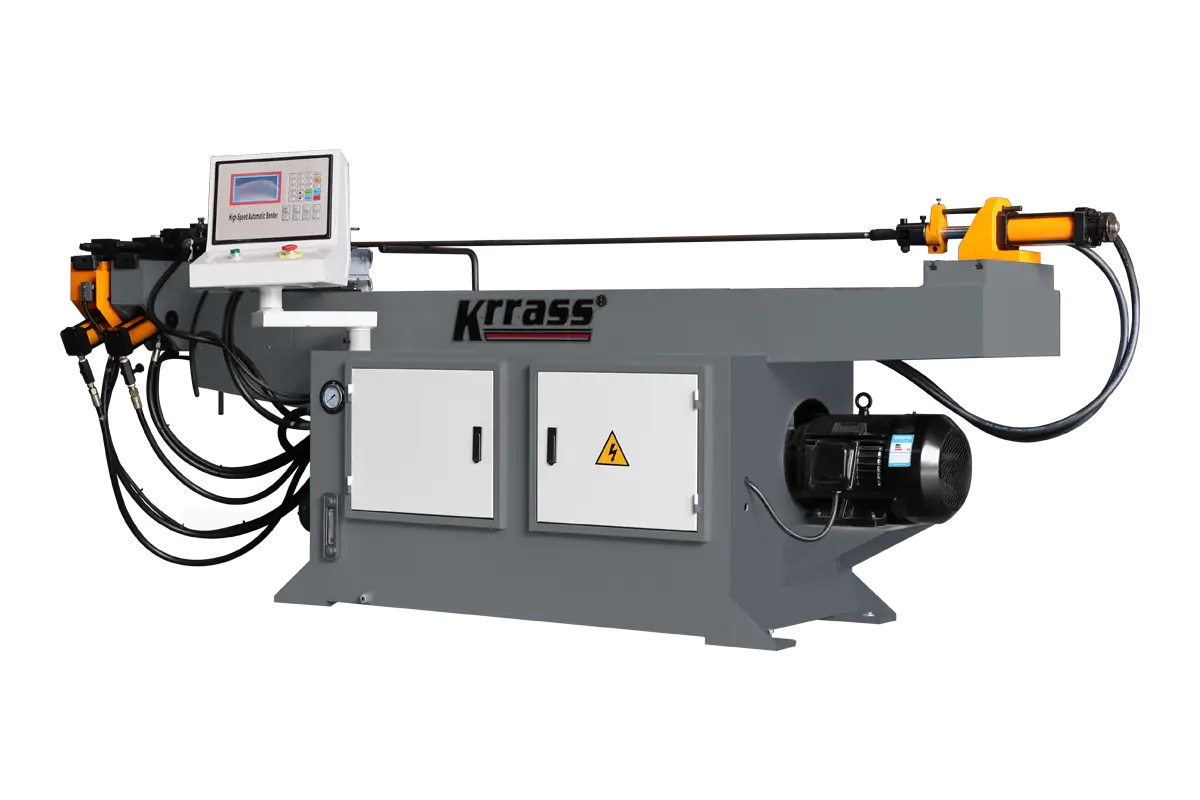
Choosing the Right Tube Bending Machine
Selecting the appropriate tube bending machine for your specific needs is a decision that can significantly impact the efficiency, quality, and cost-effectiveness of your operations. Understanding the key factors to consider and conducting a cost versus performance analysis are essential steps in making an informed choice. Let’s delve into these crucial aspects.
Factors to Consider
When choosing a tube bending machine, consider the material type, tube dimensions, bend radius, and the complexity of the bends required. The volume of production and the level of precision needed are also critical factors. Additionally, consider the space available in your facility and the skill level of your operators. Machines range from manual to fully automated CNC models, so aligning the machine’s capabilities with your specific needs is paramount.
Cost vs. Performance Analysis
Balancing cost and performance is a key consideration. While higher-end machines like CNC tube benders offer greater precision and efficiency, they also come with a higher price tag. Assess the return on investment by considering the machine's potential to increase productivity, reduce waste, and improve product quality. It’s important to evaluate whether the additional upfront cost will be offset by the long-term benefits in your specific production environment.
How to Choose a Right Tube Bender Manufacturer
Selecting the right tube bender manufacturer is as important as choosing the machine itself. The manufacturer's credibility, quality of machinery, after-sales service, and technical support are pivotal factors that can influence your operation's success. Here’s a guide to help you make an informed decision.
Manufacturer’s Reputation and Experience
Research the manufacturer's history and reputation in the industry. Look for companies with a proven track record and years of experience. Reviews, testimonials, and case studies can provide insights into their reliability and the performance of their machines.
Quality of Machinery
Evaluate the quality of the machines. Consider the materials used, the technology incorporated, and the precision and durability of the machinery. High-quality machines may have a higher upfront cost but can offer better performance and longevity, leading to a better return on investment in the long run.
After-Sales Service and Support
After-sales service is critical. Ensure that the manufacturer provides comprehensive support, including installation, training, and maintenance services. Availability of spare parts and the ability to respond quickly to service requests are also important factors to consider.
Technical Support and Training
Technical support and training are essential for the smooth operation of tube bending machines. Check if the manufacturer offers detailed manuals, training programs for your staff, and ongoing technical support. Good manufacturers will help you understand the capabilities of the machine and train your team to use it effectively.
Conclusion
The world of tube bending machines is one of intricate technology and diverse applications. The right machine can revolutionize your production process, offering unmatched precision and efficiency. As a leading tube bender manufacturer, Krrass continues to set the standard for quality and innovation. Our commitment to excellence makes us a trusted partner in your manufacturing journey. Explore our range of cutting-edge tube benders and discover why Krrass is the preferred choice for businesses worldwide. Visit us at www.krrass.com to learn more about our products and how they can benefit your business. Embrace the future of manufacturing with Krrass – where precision meets performance.
FAQs
What is the difference between CNC and manual tube benders?
CNC (Computer Numerical Control) tube benders are automated machines that use computer programming to control the bending process, offering high precision, consistency, and the ability to execute complex bends with minimal human intervention. Manual tube benders, on the other hand, require manual effort to bend the tube and are more suited for simpler, low-volume tasks. They offer simplicity and cost-effectiveness but lack the precision and efficiency of CNC machines.
How do I choose the right machine for my needs?
Choosing the right machine depends on various factors, including the type of material, tube dimensions, bend radius, complexity of bends, production volume, and budget. Evaluate the specific requirements of your projects, consider the level of precision needed, and balance the initial investment against long-term efficiency and productivity gains.
What are the most common issues with tube bending machines?
Common issues include inaccuracies in bending, wear and tear of components, and failures in hydraulic or pneumatic systems. Regular maintenance, timely replacement of worn-out parts, and adherence to operating guidelines can help mitigate these issues.
Can tube bending machines handle different materials?
Yes, tube bending machines can handle various materials, including steel, stainless steel, aluminum, copper, and more. The key is to choose the right machine and settings for the specific material, considering its properties such as ductility, hardness, and elasticity.
What are the latest advancements in tube bending technology?
Recent advancements include the integration of more sophisticated CNC technology, increased automation, improved precision, and the ability to handle a wider range of materials and complex bending requirements. Additionally, advancements in software allow for better simulation and planning of the bending process, reducing material waste and increasing efficiency.
